If you’re looking for an efficient way to water your garden, a soaker hose may be the perfect solution. Soaker hoses are designed to distribute water evenly over a wide area, which makes them ideal for watering flower beds and gardens. In this article, we will answer some of the most commonly asked questions about using soaker hoses and provide some tips on how to get the most out of yours. Let’s get started!
What Are Soaker Hoses?
Soaker hoses are an efficient and inexpensive way to water your garden. They are made out of a special material that allows water to seep through small pores along the length of the hose. This makes it possible for the water to be released slowly and evenly, allowing for thorough watering without the need to keep adjusting or repositioning the hose. [1]
Where to Place Your Soaker Hose
Bushes and shrubs
When watering bushes and shrubs, it’s best to position the soaker hose at least 6 inches away from the base of the plants so that the water isn’t concentrated in one spot. Place the hose in a circular pattern around each plant for even coverage. [1]
Flower beds
To water your flower beds, lay the soaker hose in a snaking line down the center of the bed. Make sure to leave at least 1 foot of space between the edge of the bed and any plants that are planted near it so that the water can seep out into surrounding areas. [1]
Containers
If you are watering containers, such as potted plants or hanging baskets, place the soaker hose around the outside of the container and make sure to leave a few inches between the edge of the container and the hose. This will help ensure that water reaches all areas of the plant without over-saturating one spot. [1]
Vegetable gardens
When using a soaker hose in a vegetable garden, it’s important to position it directly over each row of vegetables. This will allow for even coverage and prevent any one area from becoming overly saturated with water. [2]
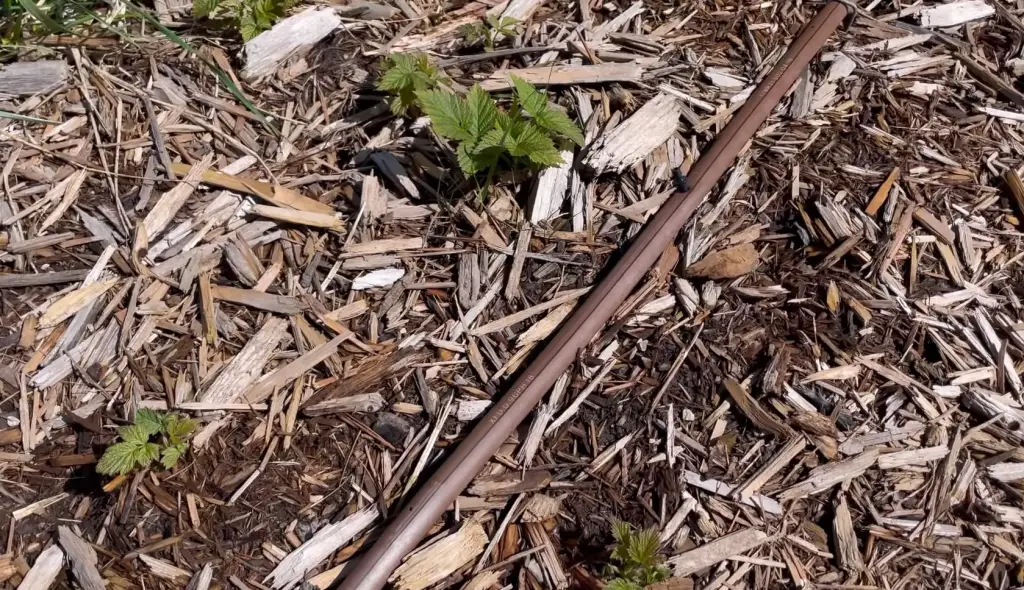
Connecting Soaker Hoses to Extend the Length
If you need to extend the length of your soaker hose, then you can easily do so with a special connector. Before connecting two hoses together, make sure both ends are cut cleanly and straight using sharp scissors or garden shears. Then connect one end of the second hose to a connector and attach it to the first hose. Push down firmly on each side until you hear a “click” that indicates they are connected securely. Finally, ensure that all connectors are secure by testing them with water pressure before leaving them unattended for long periods of time. [1]
Customizing Your Soaker Hose System
Now that you know how to use a soaker hose, you can customize your system for your yard’s special needs. Here are a few tips:
- Adjust the flow rate of your soaker hose by using various size nozzles and couplers. This helps regulate water pressure and make sure it’s evenly distributed along the length of your hose;
- Place two hoses side by side if needed. This will prevent water from running off one area before it has had time to soak into the soil;
- Install an irrigation timer to automate your watering schedule and ensure that plants are getting watered on a regular basis;
- Move your soaker hoses around your yard to ensure that different areas receive an even distribution of water;
- If you’re using a soaker hose in a raised bed or elevated container, use a pump and timer to avoid unnecessary pressure buildup;
- Cover your soaker hoses with mulch or other materials to keep them hidden during the winter months. This will also help prevent water loss through evaporation [2];
For Complex Garden Layouts
If your garden has a complex layout, you may need to use multiple soaker hoses in order to ensure proper water coverage. If this is the case, be sure to connect the hoses using a Y-splitter or a similar device. This way, you can control the flow of water and avoid any natural blockages along the hose’s path. Additionally, if one part of your garden needs more water than another, you can adjust the pressure accordingly with the help of different valves and splitters. [2]
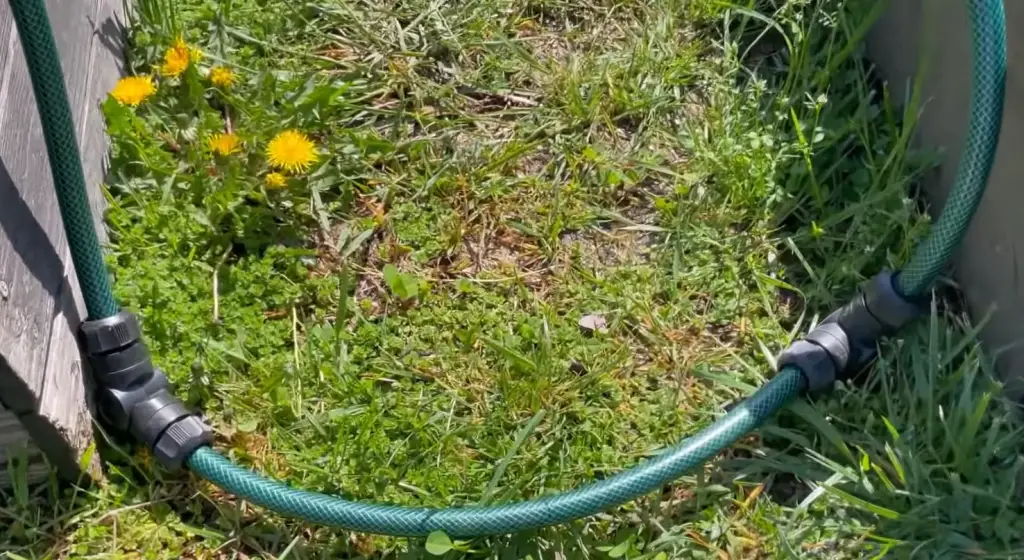
Flexible, Reliable, and Automated Watering
A soaker hose is a great tool for landscapers, as it allows them to water their plants and lawns in an efficient and automated way. By using a soaker hose, you can ensure that your plants are receiving the exact amount of water they need without having to lug around heavy hoses and buckets from one area to another.
Soaker hoses come in many different varieties, including lightweight options for smaller gardens, more robust versions for larger areas, and even models with timers and pressure regulators. They are also easily installed, require minimal maintenance, and can be customized in numerous ways to meet your watering needs. [2]
Benefits of Using a Soaker Hose
Water conservation
Using a soaker hose takes less water than traditional watering methods, and the drops of water trickle down to the roots of your plants, allowing them to absorb more. [1]
Prevent overwatering
Overwatering is one of the most common mistakes made by gardeners, but with a soaker hose, you can be sure your plants are getting the right amount of water without having to guess. [1]
Prevent weeds
By directing the water exactly where you want it, you can stop weeds from popping up in unwanted places. [1]
Quick and productive growth
Soaker hoses also help keep your plants healthy and growing quickly. The water is delivered directly to the root system, so your plants can absorb more without wasting any of it in evaporation. [1]
Healthy growth
The water from a soaker hose is less likely to carry diseases or fungus than traditional watering methods. By delivering the water directly to the roots of your plants, you reduce the chance of disease spreading from plant to plant.
As you can see, using a soaker hose has a lot of benefits for your garden. It can help conserve water, prevent overwatering and weeds, encourage quick and healthy growth, and reduce the risk of disease spreading through your garden. With just a little bit of preparation, you’ll be ready to start utilizing this great tool in no time! [1]
Save time and effort
Using a soaker hose is an easy way to save time and effort in your garden. Instead of dragging hoses around and manually distributing water, you can set up the hose and let it do the work for you. It’s also great for larger gardens because it can cover a lot of ground with very little effort.
Soaker hoses are a great tool for any gardener looking to make their life easier while still caring for their plants in the best way possible. With just a bit of preparation beforehand, you’ll be able to reap all the benefits that come with using this efficient watering system! [1]
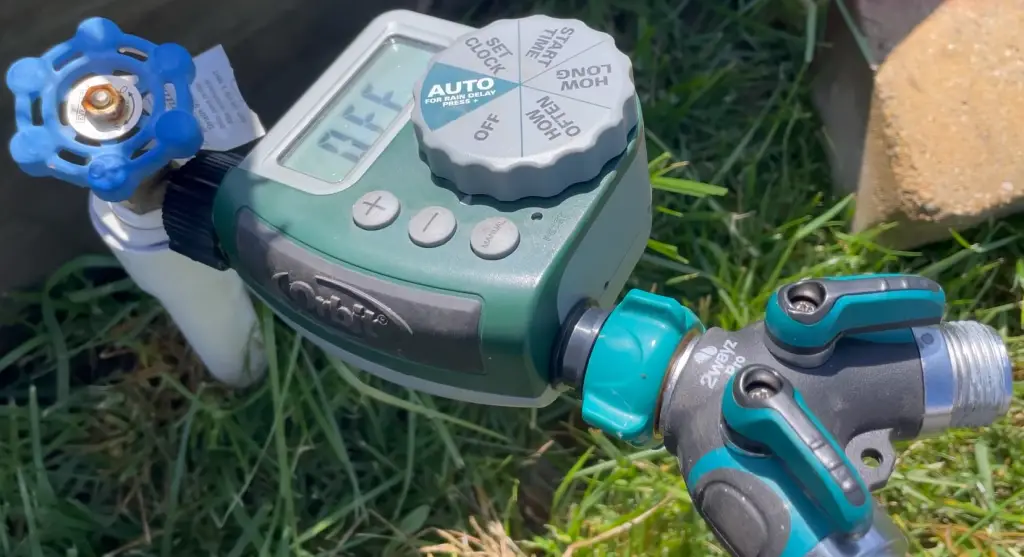
Preparing a Soaker Hose System for Autumn/Winter
Detach from the Water Source
When the weather begins to cool, it is important to detach your soaker hose from its water source to prevent freezing and damage. Be sure to turn off the main valve supplying water to the system before disconnecting. Once disconnected, store your hose in a sheltered area for protection during colder months. [2]
Safe Storage
Although soaker hoses are designed to be used during summer, they should always be stored away safely when not in use. Sun exposure can cause the rubber or plastic hose material to degrade, leading to cracks and leaks over time. If you’re only planning on using your soaker hose through the warmer months, store it in an area with minimal UV light. [2]
Preparation for Next Season
When you’re ready to start using your soaker hose again, clean it before attaching and turning on the water. Dirt and other debris can clog up the holes, reducing the amount of water that reaches your plants. To clean a soaker hose, just rinse it with vinegar and warm water or a garden hose. Once cleaned and dry, reconnect to the main water source and turn it on gradually to avoid any splitting of the material due to sudden pressure changes. [2]
FAQ
How long do you run a soaker hose for?
It depends on the type of plants you are watering, as well as how often they need to be watered. Generally, it is recommended to run the soaker hose for 20-30 minutes once or twice a week. If your plants require more frequent watering, you may want to consider running your soaker hose for shorter periods of time each day rather than all at once.
Can you connect a soaker hose to a regular hose?
Yes, you can connect a soaker hose to a regular garden hose. However, it’s important to note that the water pressure from your regular garden hose is too much for a soaker hose and will cause the holes in the tubing to be blocked, making it less efficient at soaking your plants. To avoid this issue, use an adjustable pressure regulator to reduce the water pressure before connecting the soaker hose.
Should I poke holes in my soaker hose?
No, you should not poke holes in your soaker hose as this can damage the tubing and reduce its effectiveness. Soaker hoses typically come with pre-made perforations at regular intervals along the length of the hose that allows water to slowly seep out of the hose.
How deep do you put a soaker hose?
It is recommended to bury your soaker hose around 6 inches deep in the soil. This will help ensure that the water isn’t distributed too quickly and can soak deeply into the root zone of your plants, providing them with plenty of moisture.
Do you leave soaker hoses on all day?
No, it is not recommended to leave your soaker hose on for long periods of time. Overwatering can lead to root rot and other issues with the health of your plants. Instead, run your soaker hose for shorter periods of time, such as 20-30 minutes once or twice a week, depending on the moisture needs of your plants.
Can you run a soaker hose overnight?
No, it is not recommended to run a soaker hose overnight. This could lead to overwatering and possible root rot in your plants. Instead, you should use an automatic timer that will turn the water off after a predetermined amount of time.
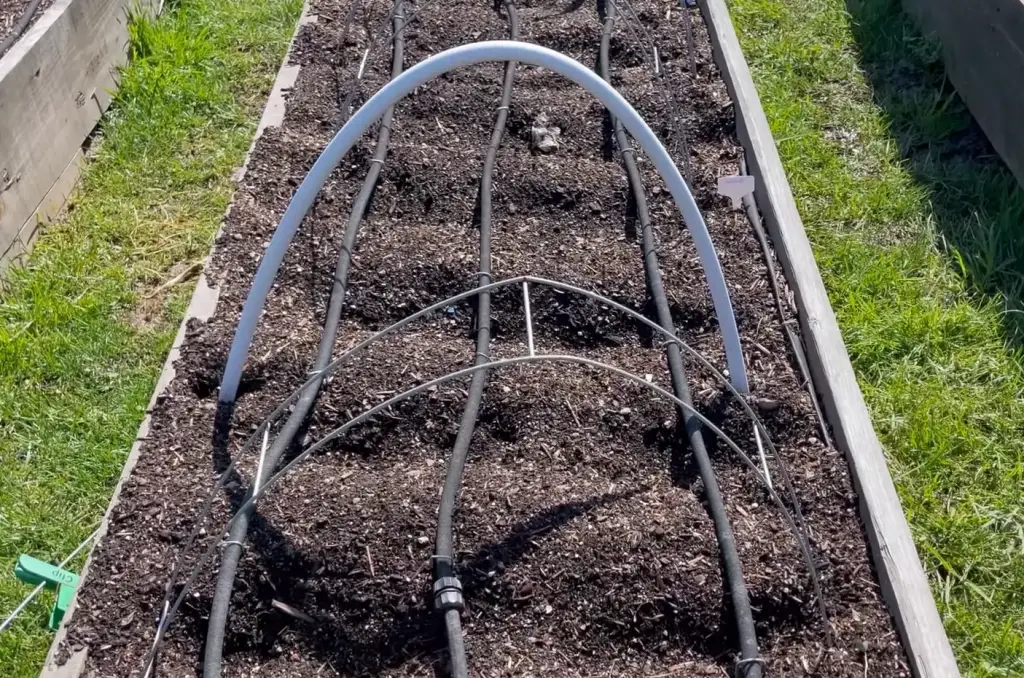
Do soaker hoses need to be removed in winter?
Yes, it is important to remove your soaker hose in the winter months. If left in place, freezing temperatures can cause damage to the hose and create cracks or leaks that can lead to water wastage. It’s best to store your soaker hose indoors during the winter months until it is needed again in spring.
How long does it take a soaker hose to water an inch?
The amount of water needed for a soaker hose to effectively water an inch of soil can vary depending on the type of soil and other conditions. In general, it can take anywhere from 20 minutes to several hours for a soaker hose to provide an inch of water.
How much water does a soaker hose put out in an hour?
The amount of water a soaker hose puts out in an hour can vary depending on the type and size of the hose, as well as environmental conditions. Generally, a soaker hose will put out anywhere from 3 to 8 gallons of water per hour.
Useful Video: Why Should You Use a Soaker Hose?
Conclusion
A soaker hose is an ideal solution for those who are looking to keep their lawn and garden watered without a lot of time, effort or expense. The simple design and low-pressure operation make it easy to install and use. By following the steps outlined in this article, you should be able to get your soaker set up in no time.
Soaker hoses are an effective way to save time, water, and money while keeping your lawn and garden happy and healthy. With proper installation, you can be sure that your soaker hose will provide you with a consistent, low-pressure stream of water for years to come. So get out there and give it a try!
References:
- https://gilmour.com/set-soaker-hose
- https://www.waterirrigation.co.uk/how-to-use-soaker-hose





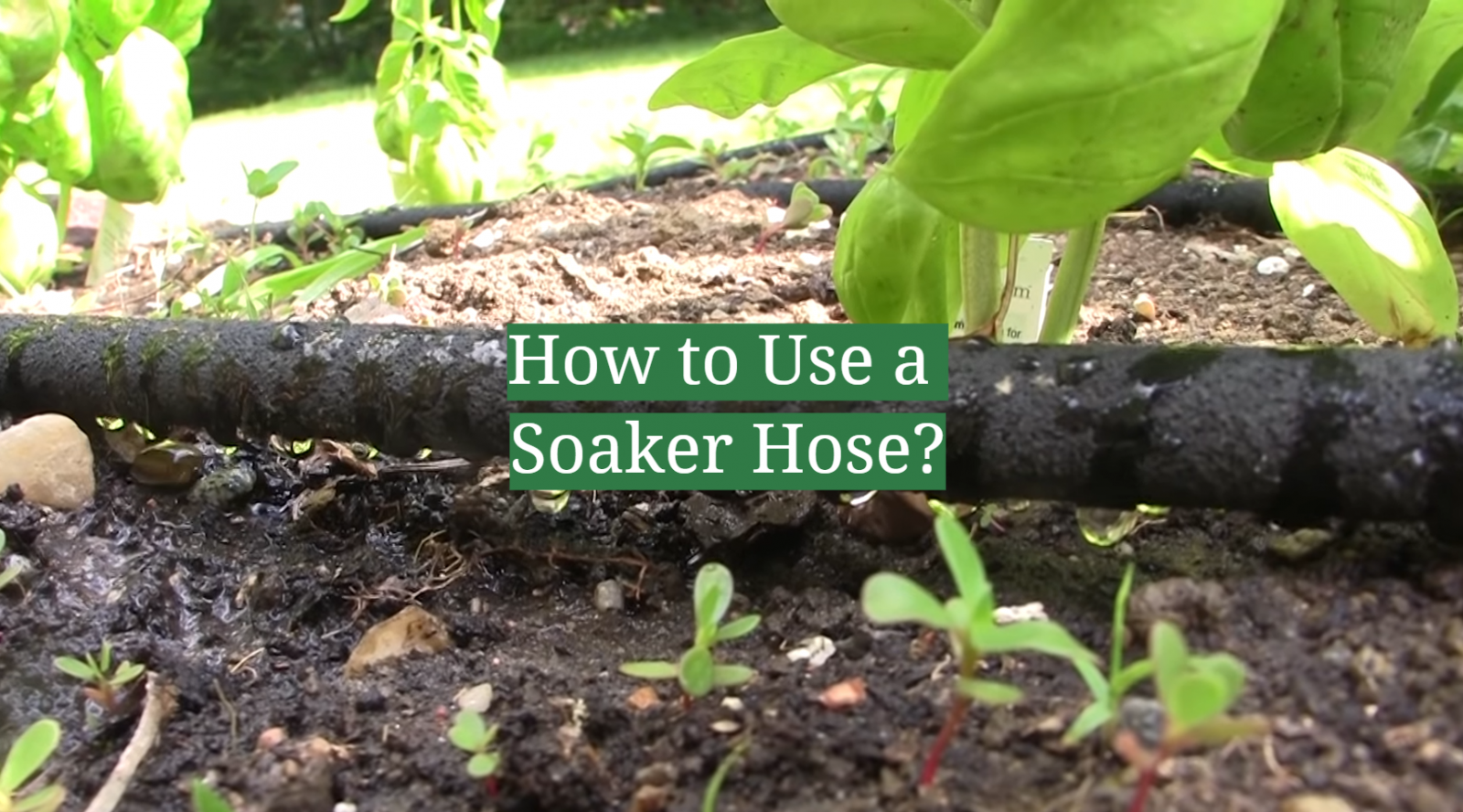
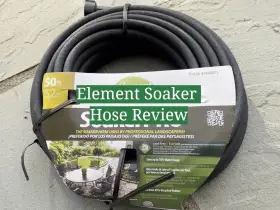
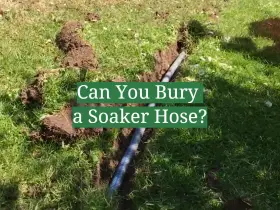
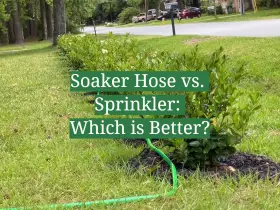
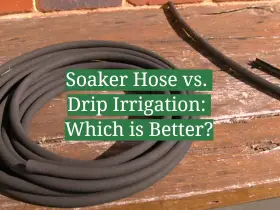
Leave a Reply
View Comments